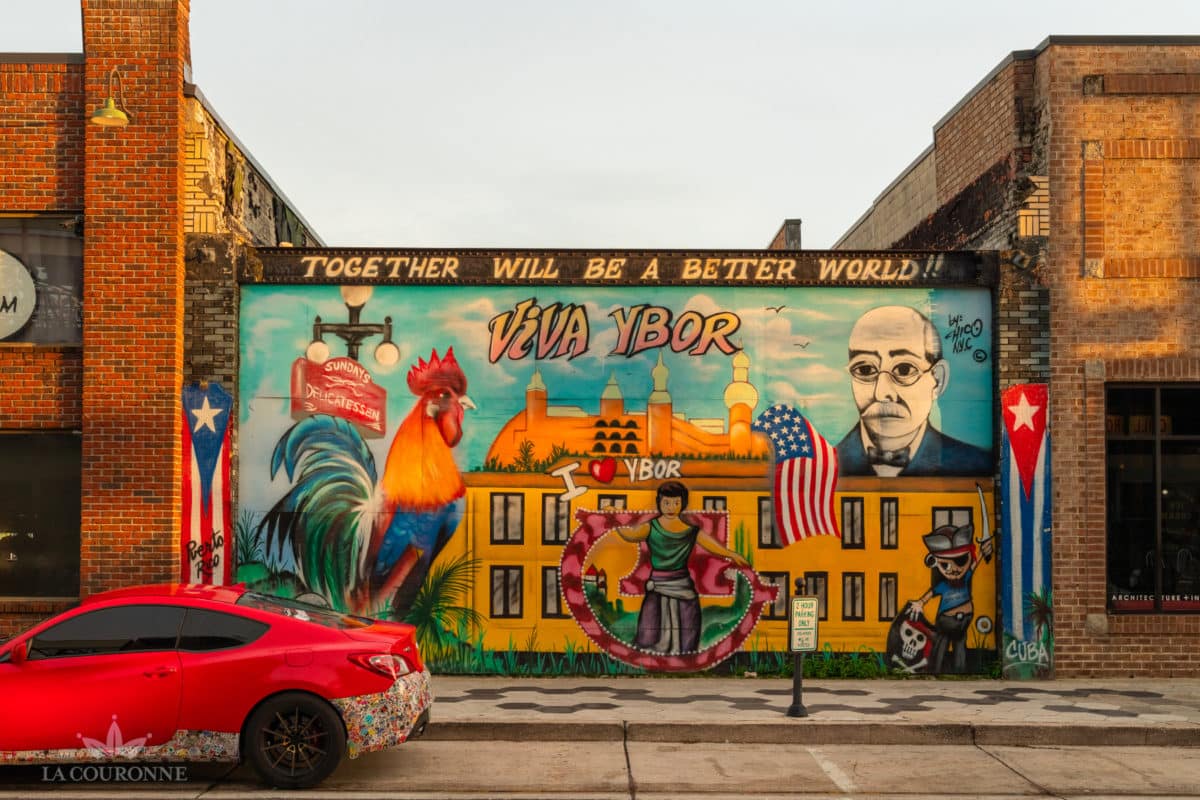All about cigars
Ybor City: the cigar capital of the world
Founded in 1886, Ybor City is a historic neighborhood in Tampa, Florida. Now famous for its museums, restaurants and Mediterranean Romanesque architecture, it has long been home to some of the world's most flourishing cigar factories. This industrial activity earned it the nickname of "cigar capital of the world" in the late 20th century. Today, this heritage lives on through such cigar greats as J.C. Newman and Arturo Fuente.
The birth of Ybor City
Ybor City owes its name to Vicente Martínez-Ybor, one of the most talented cigar makers of his generation. Born in Seville in 1818, this Spanish immigrant settled in Cuba in 1832 and launched the "Prince of Wales" cigar brand in 1856. In 1869, he was forced to leave Cuba because of his support for the independence movement during the Ten Years' War.
This exile led him to Key West, Florida, where he opened a small cigar factory. During this period, he employed mainly Cuban workers and purchased from tobacco growers on the island. This system enabled him to manufacture high-quality cigars while avoiding the customs duties applied to Cuban cigar exports. But despite its undeniable success, these years were marked by social tensions with its workers, as well as logistical difficulties linked to the transport of tobacco from Cuba.
In 1885, he joined forces with his friend Ignacio Haya and bought 16 hectares of land near the city of Tampa to build a new factory. Ideally located, this site offered privileged maritime access, enabling tobacco to be shipped quickly from Cuba. In 1886, the last stone of the Martinez Ybor & Co factory was laid, and production of "Prince of Wales" cigars was transferred from Key West to Tampa. The construction of this factory also marked the birth of Ybor City, a city born of one man's vision and annexed a year later by the City of Tampa.
The development of Ybor City
Drawing on his past experience, Vicente Martínez-Ybor quickly built houses to accommodate his workers. He also became involved in the town's development, financing the construction of roads, doctors' surgeries, insurance companies and gas distribution companies. The dazzling success of his enterprise soon attracted newcomers, and by 1890, this plot of land had grown from just a few hundred inhabitants to more than 6,000.
Hailing from the four corners of the globe, the inhabitants of Ybor City form a melting pot that can be found nowhere else in the southern United States. This ethnic and cultural diversity has played a major role in forging the city's identity, and still characterizes this Tampa neighborhood today. In the years following the construction of the Martinez Ybor factory, many cigar manufacturers set up shop in the city. The death of Vicente Martínez-Ybor in 1896 did nothing to slow this development, and by the early 1920s, there were no fewer than 200 cigar factories and over 100,000 inhabitants in Ybor City. At its peak in the mid-1920s, more than 500 million cigars were produced each year within its walls, and the town inherited the nickname "Cigar City".
Ybor City and the Fuente family
Among the cigar manufacturers who settled in Ybor City in the early 20th century was the now-famous Fuente family. Arriving in Tampa in 1902, Arturo Fuente founded his cigar factory a few years later at 813 Francis Street. Like Vicente Martínez-Ybor, he imported tobacco directly from Cuba to roll his cigars, and enjoyed rapid success. But in 1924, the Fuente factory burned down and Arturo was forced to abandon his business. Despite the difficulties, he continued to roll cigars from his family home in Tampa, and in 1946, he repeated the experience by founding the Arturo Fuente Cigar Factory. Ten years later, he bequeathed the reins of the company to his son Carlos, who strove to export the Fuente name beyond the walls of Ybor City.
Although the A. Fuente cigar brand is now based in the Dominican Republic, it has always maintained its roots in the neighborhood where it was born. Its headquarters are thus still located in Ybor City, and the Fuentes continue to invest in community and urban projects such as the restoration of the Great Cigar Cathedral in 2021. In 2016, Tampa's mayor also renamed a stretch of2nd Avenue "Carlos Fuente's Way" to pay tribute to this iconic city figure.
The decline of Ybor City
In 1929, the stock market crash plunged the United States into an unprecedented recession. This crisis did not spare Ybor City, which saw its business decline rapidly. Many cigar factories were forced to close, and in 1940, the Martínez-Ybor factory also closed. Between 1930 and 1940, a quarter of European immigrants and over half of Cuban immigrants left Ybor City in the hope of finding new employment. Only a few cigar factories managed to stay in business.
This decline continued well after the Second World War, notably due to the development of mechanization and the success of cigarettes. In 1962, the American embargo added to these difficulties, prohibiting the export of tobacco leaf from Cuba. The few cigar manufacturers still present in Ybor City had to source their tobacco from other countries. Today, the golden age of cigar making is well and truly over in Ybor City, but the town is enjoying a new lease of life thanks to the development of tourist activities. Although cigar factories are now rare, many visitors flock here every year to discover the 950 or so historic buildings and structures that have survived from that era. In 1990, Ybor City was also designated a historic site for its role in the national immigration movement.

